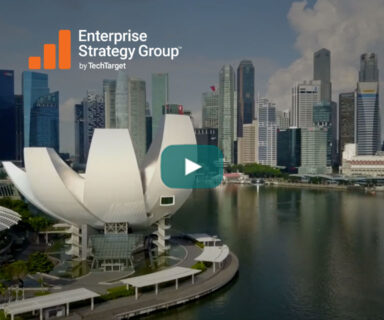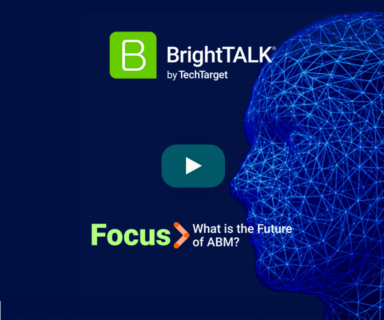- September 10, 2021
- Partner Marketing
6 Practical Partner Marketing Tips from the Enterprise Strategy Group
 While a vanguard of organizations is now investing more in their partner programs, many partner marketing teams are still struggling towards ambitious goals with limited resources.
While a vanguard of organizations is now investing more in their partner programs, many partner marketing teams are still struggling towards ambitious goals with limited resources.
For insight into how partner marketing organizations can improve their strategies, Michael Latchford, VP of Strategic Alliances and Partner Marketing Services recently spoke with Kevin Rhone, Channel Acceleration Practice Lead at Enterprise Strategy Group (ESG). Here are a few takeaways from their conversation.
#1 – To define reasonable milestones for success, clearly establish where you’re at now
Ambitious goals make it especially hard to show meaningful progress. Gaining support typically depends on demonstrating progress, however. So, you need to have a comprehensive understanding of where your partner marketing program stands today and communicate that to stakeholders. ESG helps client partner marketing teams with this assessment by working through answers to a set of key questions, including:
- Are you attracting and retaining the “right” kind of partners?
- How do you best align ideal partner profiles with target customer segments?
- How can you increase partner commitment and share of wallet?
- Are you partners prepared for success in high-growth segments?
- Could your partners sell more effectively to deliver increased revenue at a faster rate?
- How do your programs stand up to competitors’ (that recruit for the same partners)?
The goal of this assessment is to understand areas of progress to date and potential opportunities for improvement. From there, a reasonable benchmark can be established.
#2 – Strong and clear value proposition remains fundamental
While this may seem obvious, too many teams invest too little on articulating a partner program’s value proposition when they’re starting up. To attract the partnerships you need now and for the long term, a program’s value proposition must continuously resonate with prospective partners. In ESG’s experience, this means centering your focus on prospective partners’ key questions. In practice, ESG employs a five-point methodology to help clients develop impactful value propositions, including a series of guiding questions to lay the groundwork:
- Impact on sales growth – How big is the market opportunity and do our customers want this solution? Is it easy to articulate when selling?
- Fit and synergy with the partner’s business – How does the solution fit into the business? Is it easy to get this up and running within our organization?
- Financial return – How will this partnership make our business money? What does it cost to get in and stay in the partnership? What ongoing investments need to be made?
- Differentiation – How does this partnership set us apart from other partners with similar competitive solutions?
- Extensibility of customer relationships – How might this partnership help support the long-term relationships we have with our own customers?
#3 – No matter the scale of your program, focus on quality over quantity
As partnering becomes more and more competitive, it can be tempting to build volume. But volume necessarily increases the risk of lower average success because of the difficulty in managing consistent value delivery at scale. When in program start-up mode, instead of prioritizing a volume objective, Kevin recommends focusing on a smaller number of partnerships – even as small as one to three partners. He sees this as a more strategic approach because it better allows you to focus on constructing a successful value delivery model. By keeping partner numbers manageable early on, you can optimize program elements before taking on the additional challenges that come with greater scale.
#4 – Keep an eye on the partner landscape as it continuously evolves.
Markets can evolve quickly, so it’s natural that the preferences of partners within them will also evolve at a similar pace. And likewise, that means that a partner program must not remain static – it needs to be able to adapt to its constituencies’ requirements. Therefore, to remain competitively attractive to partners, it’s important that partner marketers always keep an eye on the landscape and adjust to changes quickly.
Kevin identified two areas where he’s seeing notable shifts in the partner landscape right now. The first is the increasing interdependence of vendors. They’re interacting with each other more and forming alliances for the benefit of partners. The second is a shift away from dependency on the transactional resale model.
#5 – Message the customer with a focus on their needs.
While the relationship between vendor and partner is similar to other supplier/customer relationships, it’s important to remember that there are major differences too. These differences are evident in the customer-facing messaging that is most effective in the programs ESG helps roll out. Kevin strongly cautions against relying on messaging that leads with the solution, because this puts the onus of understanding and distinguishing between offerings squarely on the customer. Not only does this make the buying process more difficult, it removes the potential for a partner to stand out. The better approach is to speak clearly to the true interests of customers as understood through vendor and partner experience. To build customer confidence in a particular supplier/partner pairing, you must show that you grasp customer issues and that your solution will address what’s important to them. The combined supplier/partner value proposition captured in your messaging must provide both a business justification and an emotional rationale for making a purchase now and making it with you.
#6 – Preferred content formats continue to evolve.
Go-to-market teams across distribution models recognize both the importance of good content and the difficulty of producing it. Whatever the format, the content your partner marketing program delivers is critical to accelerating value realization for partners. In the past, ESG saw content creation efforts heavily weighted towards investment in long-form materials, like white papers. Now, there is increasing receptivity to more “snackable content” – formats that can be quickly viewed and understood. Formats like three-minute videos, infographics and two-page business justification briefs are highly successful for engaging prospects. This is good news for resource-strapped teams, since short-form content can be easier to produce and update.
For more insights from partner marketing experts, check out TechTarget’s Partner Marketing Visionaries webinar series. To learn more about products and services to support your partner marketing efforts, contact Michael Latchford.
alliance marketing, Channel and Alliance Partnerships, channel marketing, channel marketing strategies, partner marketing, partner marketing ecosystems



